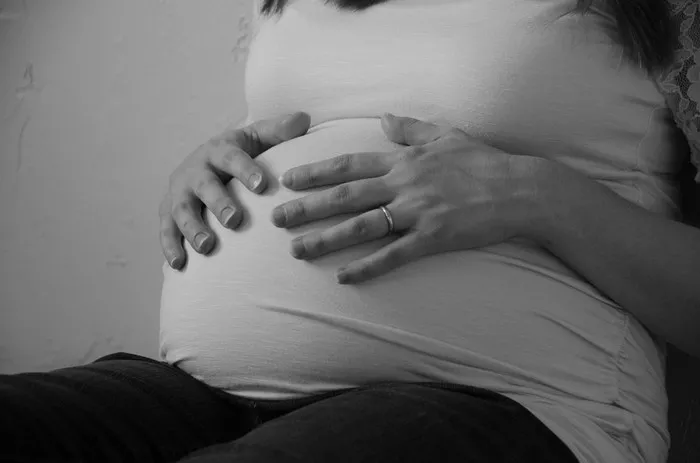Causes of Bilateral Varicocele
Anatomical Factors
The testicular veins have a complex anatomical structure. In some cases, the left testicular vein drains into the left renal vein at a right angle, which can create a pressure gradient that predisposes to varicocele formation. The right testicular vein, which drains directly into the inferior vena cava, is less commonly affected. However, in bilateral varicocele, both sides may be involved due to factors such as congenital weakness in the vein walls or abnormal valve development. For example, if a person has a genetic predisposition to weak connective tissues, it can affect the integrity of the valves in both testicular veins, leading to the pooling of blood and varicocele formation.
Increased Intra-Abdominal Pressure
Activities that increase intra-abdominal pressure can contribute to the development of bilateral varicocele. Prolonged standing, heavy lifting, or straining during bowel movements can force blood back up into the testicular veins. For instance, individuals with occupations that require them to stand for long hours, like factory workers or security guards, may be at a higher risk. Additionally, chronic constipation or conditions that cause increased abdominal pressure, such as obesity or large abdominal tumors, can also play a role in the onset of bilateral varicocele.
Symptoms of Bilateral Varicocele
Scrotal Discomfort
One of the most common symptoms is a dull, aching pain or a feeling of heaviness in the scrotum. This discomfort may be more pronounced after standing or physical activity and may be relieved by lying down. For example, a patient might notice that after a long day at work on his feet, the pain in his scrotum becomes more intense. The pain can vary in severity from mild to moderate and can sometimes radiate to the lower abdomen or groin area.
Visible or Palpable Abnormalities
In some cases, the enlarged veins can be seen or felt through the scrotal skin. The scrotum may appear swollen or have a “bag of worms” texture when the varicoceles are large. A doctor can usually detect these changes during a physical examination. For instance, during a routine testicular examination, the physician may notice the presence of enlarged, tortuous veins in both testicles, which is a characteristic sign of bilateral varicocele.
Impaired Sperm Quality and Fertility
Bilateral varicocele can have a negative impact on testicular function and sperm production. It may lead to a decrease in sperm count, motility (the ability of sperm to move), and morphology (the shape of sperm). This can result in difficulties in conceiving a child. Couples may experience infertility issues, and investigations may reveal that the male partner has bilateral varicocele as a contributing factor.
Diagnosis of Bilateral Varicocele
Physical Examination
A thorough physical examination of the scrotum is the first step in diagnosing bilateral varicocele. The doctor will palpate the testicles and surrounding structures to feel for any enlarged veins or abnormal masses. They may ask the patient to perform a Valsalva maneuver (bearing down as if having a bowel movement) to increase intra-abdominal pressure and make the varicoceles more prominent. For example, during this maneuver, the doctor can better assess the size and extent of the varicoceles and determine if they are bilateral.
Ultrasound Imaging
Doppler ultrasound is a commonly used diagnostic tool. It uses sound waves to create images of the testicular veins and measure blood flow. This helps in accurately visualizing the varicoceles, determining their size, and assessing the blood flow patterns. It can also provide information about any associated testicular abnormalities. For instance, the ultrasound can show whether the blood is flowing back in the veins, which is a key indication of varicocele.
Hormonal Evaluation
Since varicocele can affect testicular function, hormonal tests may be performed. Levels of hormones such as testosterone, follicle-stimulating hormone (FSH), and luteinizing hormone (LH) are measured. Abnormalities in these hormone levels can give an indication of the impact of bilateral varicocele on testicular endocrine function. For example, a decrease in testosterone levels may suggest that the varicocele is affecting the Leydig cells in the testicles, which are responsible for testosterone production.
Surgical Intervention
Open Varicocelectomy
In this procedure, the surgeon makes an incision in the scrotum or abdomen to access and ligate (tie off) the affected veins. There are different approaches, such as the inguinal, subinguinal, or retroperitoneal approach. The choice of approach depends on various factors, including the size and location of the varicoceles. For example, the inguinal approach may be preferred for some cases where the varicoceles are more accessible from that area. After the surgery, patients need to follow a post-operative care regimen, including rest, pain management, and avoiding strenuous activities for a period.
Laparoscopic Varicocelectomy
This is a minimally invasive technique. The surgeon inserts a laparoscope (a thin tube with a camera) through small incisions in the abdomen. This allows for a more detailed view of the internal structures and the ability to ligate the veins with precision. It offers the advantage of less post-operative pain, shorter hospital stay, and faster recovery compared to open surgery. However, it requires specialized surgical skills and equipment.
Microscopic Varicocelectomy
Using a microscope, the surgeon can identify and ligate only the abnormal veins while preserving the normal ones. This technique has a high success rate in improving sperm parameters and fertility. It is especially beneficial in cases where preservation of testicular function is crucial, such as in patients with bilateral varicocele and concerns about future fertility.
Non-Surgical Management
Lifestyle Modifications
Making certain lifestyle changes can help manage the symptoms of bilateral varicocele. Wearing supportive underwear can provide scrotal support and relieve some of the discomfort. Avoiding activities that increase intra-abdominal pressure, like heavy lifting and prolonged standing, is also recommended. For example, a patient may be advised to take breaks and sit down if his job involves standing for long periods. Additionally, maintaining a healthy weight through a balanced diet and regular exercise can reduce the risk of exacerbating the varicocele.
Medical Therapy
In some cases, medications may be prescribed to relieve pain or address associated symptoms. Anti-inflammatory drugs can help reduce scrotal pain and swelling. However, medical therapy alone is usually not sufficient to cure bilateral varicocele but can be used as an adjunct to other treatment methods.
Post-Treatment Considerations and Follow-Up
Recovery Period
After surgical treatment, patients need an appropriate recovery period. This includes getting enough rest, following a diet rich in nutrients for tissue healing, and gradually resuming normal activities. The time required for full recovery can vary depending on the type of surgery and the individual’s overall health. For example, after laparoscopic varicocelectomy, patients may be able to return to light activities within a week or two, but full recovery may take a few months.
Fertility Monitoring
Since bilateral varicocele can affect fertility, post-treatment fertility monitoring is essential. Sperm analysis is usually performed at regular intervals to assess any improvements in sperm parameters. Couples may also need to be counseled about the optimal time to attempt conception. In some cases, even after successful treatment, it may take several months for sperm quality to improve significantly.
Long-Term Surveillance
Regular follow-up with a urologist is necessary to monitor for any recurrence of the varicocele or the development of other testicular problems. Physical examinations and ultrasound scans may be repeated periodically. This is especially important in bilateral varicocele cases as the risk of recurrence or new varicocele formation in the other testicle exists. For example, a patient may have annual check-ups to ensure the long-term health of his testicles and to address any emerging issues promptly.


























